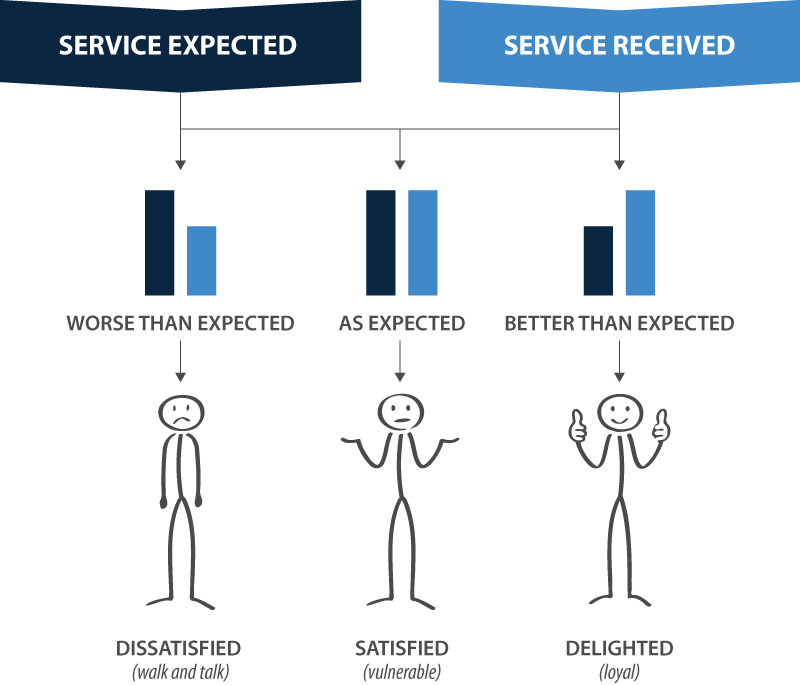JoomConnect Blog
MSP Marketing: Customer Satisfaction Levels (1 of 3) - Dissatisfaction
A business is made up of people. And, people make mistakes. Further mistakes can result when technology issues start to arise on your end. There’s not too much you can do in regards to stopping all mistakes before they happen. But, there’s a lot to be said about what you do once that mistake reaches your customer base.
Whether these mistakes are recognized and addressed or not after affecting end users, they can result in a disgruntled customer base. How you attempt to mitigate what occurred can make or break your company: you DON’T want true customer dissatisfaction to occur.
The Dangers of Dissatisfaction
There are three main levels of customer satisfaction that vary depending on the difference between perceived and expected service:

- Dissatisfied, where your customer’s expectations are not met
- Satisfied, where your customer’s expectations are met (a neutral state)
- Delighted, where your customer’s expectations are exceeded
Obviously, you want to aim to delight your customers as frequently as you can: delighted customers will remain loyal to your brand, while customers who are just satisfied may become indifferent over time and switch to one of your competitors.
It’s even worse with dissatisfied customers: these customers are more likely to take their business elsewhere, more likely to withhold referrals, and more likely to spread negative reviews. And, the number of dissatisfied customers you have will grow unless you start addressing their problems.
The problem is, it’s not always easy to identify customers who are dissatisfied. Often, these customers aren’t identified until it’s too late. This is more common - and, more detrimental to your company - than you might think:
- 96% of dissatisfied customers never voice their complaints to the company
- 80% of companies believe they are delivering excellent service, but only 8% of their customers feel they are receiving excellent service
- Sensitivity to price increases by 100% the moment a customer reports a problem
- Unhappy customers who don’t complain are approximately 20-30% less loyal
To minimize the levels of dissatisfaction occurring among your clientele, you need to understand what to look for in the first place.
Types of Dissatisfaction
Dissatisfaction results when your company, one of your products, or a service you provide, fails to meet your customer’s expectations. This failure can take many different forms, but is typically at least one of the following:
- Failure in terms of quality
- Failure to deliver what was promised
- Failure in terms of performance or usability of a product
- Failure of the product or service in meeting customer needs and expectations
- Failure in terms of price-to-quality ratio
- Failure in regards to customer service
- Failure in terms of credibility and trustworthiness
Obviously, the more permanent the failure is in terms of its longevity, the severity of the failure, and the greater number of failures that occur, the more dissatisfied your customer is going to be.
Collecting Feedback from Dissatisfied Customers
Clients that choose to express their dissatisfaction will likely turn to one of the following outlets to express their feelings:
- Your website
- Your support email (or, the email of an employee they’re working with)
- Your social media channels
- Your ticketing system
- Your company’s live chat
- Your support phone number
- A review website (you DON’T want this to happen)
No matter where you receive your feedback from, it’s important to respond promptly so you can resolve the issue as soon as possible. This is especially true if they choose to do so in a public manner - you don’t want negative feedback detering prospects from doing business with you!
More Is Coming!
Stay tuned for the next topic in this blog series, covering how to turn dissatisfied customers into satisfied customers. And, contact us for help in collecting feedback and utilizing positive feedback to your advantage, which is essential to your MSP marketing goals..




Comments